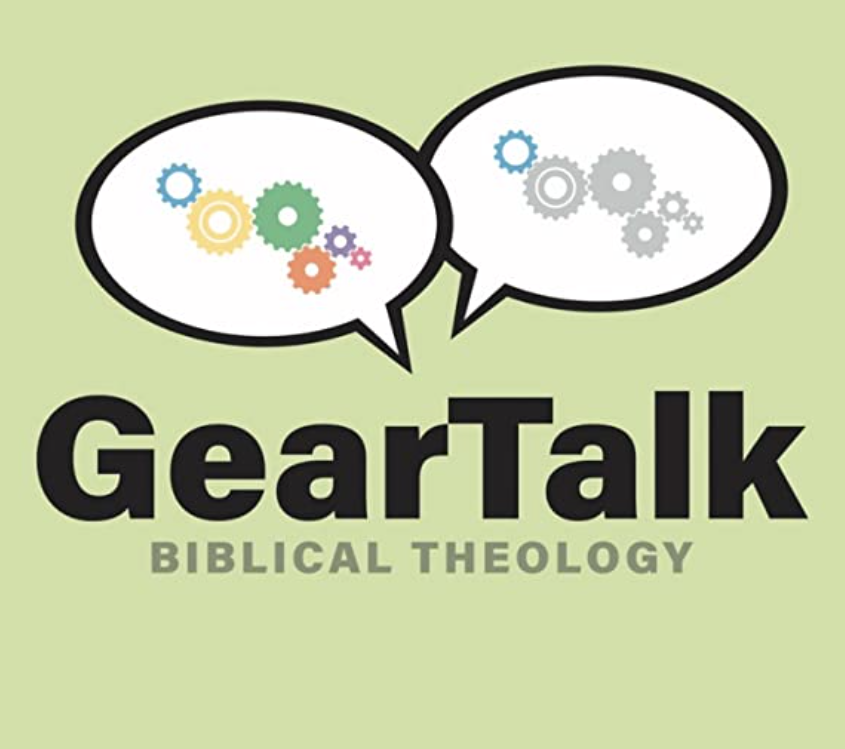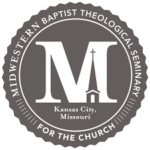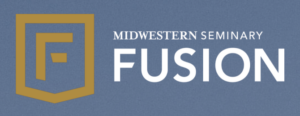The Three-Part Arrangement of Jesus’s Bible
The Three-Part Arrangement of Jesus's Bible
Transcript
JY: Welcome to Gear Talk, a podcast on Biblical Theology. Today, Jason DeRouchie and Tom Kelby talk about Jesus’s Bible. While he didn’t carry a Bible, he had one in his mind. He had a lot of thoughts about the books in the Old Testament and how these books are arranged. Find out why it matters.
TK: Thanks for joining us for our very first episode of Gear Talk. I’m Tom Kelby, president of Hands to the Plow. I’m sitting right across the table from Jason DeRouchie. He is content developer and global trainer with Hands to the Plow. We are very excited to be doing these podcasts. We believe they will be a help to people who love God’s word and have set their hearts to study it, obey it, and teach it to others. I actually stole that from Jason. It’s one of his favorite verses. Where does it come from?
JD: Ezra 7:10.
TK: Why do you like that, Jason?
JD: I just like it because, in the context, it identifies that God blessed Ezra because “He set his heart to study and to practice the law of the Lord, and to teach both statute and rule in Israel” (Ezra 7:10)—in that order. And I think it just sets a great pattern. We don’t want to be those who teach without having studied. But we also don’t want to be those who teach without having lived, obeyed. We want to be authentic proclaimers of God’s word. We don’t want to herald our own words. We want to proclaim the true word of God. And Ezra set a pattern for that. And God blessed his ministry. And I think it’s a good pattern for us to follow today.
TK: And and we can’t skip any of those three study, obey or proclaim God’s word. If I won’t proclaim it, and there’s something in it that I’m not liking in my soul. What’s in my heart. I need to talk about.
JD: Yes, that’s good.
TK: So this is really for every Christian leaders in the church, certainly, but also those who love God’s word. We are going to be talking about God’s word, but I want to start with introduction. So Jason, can you tell us who you are.
JD: Who I am. Well, I am a father of a table full. We’ve got six of our own kids. My wife Teresa and I have been married for almost 3 decades and we’ve got two son-in-laws. Live in Kansas City, Missouri. I am research professor of Old Testament and Biblical Theology at Midwestern Baptist Theological Seminary. And then, as you said, serve as content developer and global trainer with Hands to the Plow ministries. I’ve been able to serve as a pastor in two different churches in the past. And loved, over more than a decade now, partnering with you in rural Wisconsin and beyond, training pastors, training the majority minister in this world.
TK: And this is a title we’ve talked about quite a bit. What did you mean by majority minister?
JD: Most of the pastors in this world, at least 85% have no formal theological training. They’ve never been able to go to Bible college or to seminary. And yet God’s called them to shepherd flocks. And we here at Hands to the Plow feel compelled to serve the majority pastor and minister in our world, who needs God’s word, who needs to be equipped more with how does the whole Bible progress integrate and climax in Jesus? So that’s Biblical Theology and Gear Talk is a podcast of Biblical Theology.
TK: I love it. Well, before we get into today’s topic, I’ll tell you a little bit more about myself. Again, my name is Tom Kelby. I’m president of Hands to the Plow. I also work with a group of churches. I served as a pastor for a number of years and then was called to work with the group of churches our church was part of. So kind of pastoring the pastors. Before that—so when I got out of school, I worked in advertising as a copywriter and that work is reflected in what we do at Hands to the Plow. It’s also reflected in a sweet partnership both Jason and I have with one of our good friends, Mark Yeager, who does illustrations and design for us, making things easy to understand. So I am very thankful for that background. Kind of funny the way I got to know Jason is I’m older than him, but he’s been my professor. On several occasions he was my Hebrew professor, so I was scared to death of this man because I thought there’s no way I’m going to pass his course and he made it sweet and that’s where we built a friendship. That was a lot of years ago.
JD: Yeah, you invited me up, and my wife and I came not knowing what we’d be getting into, and God blossomed it into now over a decade of partnership and ministry.
TK: Yeah. And our kids are great friends, been able to go to the Boundary Waters in northern Minnesota together. Just lots of fun stuff.
JD: Absolutely.
JD: Alright. So today’s topic—we’re going to be talking about something and title is Jesus’s Bible. So this is something that you, if you were hanging around Jason, you’d hear him refer to this. So Jason, tell us what you mean by Jesus’s Bible.
JD: Sure. Well, Jesus never read the book of Romans. He never read the story of himself in the Gospel of John. He never read the book of 1 Peter or Revelation. His only Bible was what we call the Old Testament. Exact same books that raised him up and helped shape his own understanding of who he was as the Messiah of God’s people, the son of God who became man with a mission to save for the glory of God. And Jesus read about that Messiah and that mission in what we call the Old Testament. That’s what I mean by Jesus’s Bible.
TK: So his Bible would have been 3/4 of what our Bible is and how clearly would you say the Messiah is found in what we call the Old Testament?
JD: Well, when I think it’s—he’s there very clearly. I think Moses, who gave us the first five books of our scriptures, knew of Jesus. John chapter 5, Jesus said Moses wrote about me (John 5:46). He was aware. Jesus says in John chapter 8, “Abraham saw my day—he rejoiced and was glad” (John 8:56). These are Old Testament saints who were seeing and savoring, anticipating the coming of the Messiah. Peter says in Acts 3:18, that all the prophets, all of them from Moses and Samuel and all the rest, foresaw the sufferings of Christ and the glories that would follow.
Then we read in 1 Peter chapter 1 that the very prophets that proclaim the salvation that we’re enjoying, that spoke of the grace that is ours, they were the ones who were searching and inquiring carefully to know “what person and time the Spirit of Christ in them was foretelling … the sufferings of Christ and the subsequent glories. It was revealed to them that they were serving not themselves but [us]” (1 Pet 1:10–12)—we, upon whom the end of the ages have come. These very brothers were searching and inquiring to know who Jesus would be and when Jesus would come. Where were they searching and inquiring? I think Isaiah was looking in the books Moses gave us, that Zechariah was reading Isaiah to learn more about the Messiah in his time. I think the entire Old Testament is pervasive in its portrayal of Jesus and the mission that he would spark. We see that most very explicitly in the Gospel of Luke.
TK: So that that actually brings us to our—the name of this podcast is Gear Talk. If you’re coming thinking you’re going to hear about mechanics and things like that, we are super glad you’re here. Hang around. I think this will be really good. But we chose the name Gear Talk for a specific reason. If you go on our website, Handstotheplow.org, you’ll see that in our curriculum we have a logo—it has six gears, almost like a transmission in a car or truck they’re all linked together. But there’s six gears and it’s a way we have to refer to the sections in the Bible. So in the Old Testament we have three sections: The Law, the Prophets and the Writings. And in the New Testament it’s not quite so clear as far as they don’t talk about it like this, but if you think about—you have history books in the New Testament, the Gospels and Acts. So Matthew, Mark, Luke, John, and Acts. Then you have Letters, letters by Paul and letters by others. And then you have Revelation.
So three sections in the Old Testament—the Law, the Prophets, and the Writings—three sections in the New Testament. All those things we’ve portrayed as gears. So if we said well in the first gear or whatever we’re talking about Moses’s books, that’s the picture. And like a transmission where all the gears are working together for one purpose of moving the vehicle forward, all the parts in the Bible are designed to integrate and work together. They all have a purpose, but they’re all different. So the Law is different from the Prophets in the Old Testament. So Jason mentioned Luke 24—and just want to say something about the way we’re going to try to work mostly—is we’re assuming a lot of you are doing something that you can’t actually look up the verses, like you’re driving in your vehicle or something, listening while you’re doing something else. But where we have to, we’re going to read things and talk about them, so then you can go back. But Jesus talks about the sections in the Bible in Luke 24. So that’s Jason what you were referring to.
JD: That’s right. Yeah. In Luke 24, Jesus lays out—what is his Bible about. And so this is right after his resurrection. He has encountered these guys on the road to Emmaus first off. And that’s where we see him say explicitly, why is it surprising to you that the Messiah would have had to suffer and die? Is that not exactly what was written in the Old Testament, he said. And and then we read, “And beginning with Moses”—that’s Moses’s first five books—”and all the Prophets, he interpreted to them in all the Scriptures things that were concerning him” (Luke 24:27). So that’s right after his resurrection—he sees these two brothers and then he departs and their hearts burn within them. And then he shows up again and he talks to the disciples.
TK: So before before we get there. That conversation, which a lot of people would say I wish I was there for that day, like how did Jesus do it? Would you say the apostles actually showed us how he did it? Like this doesn’t have to remain a huge mystery for us, but we’d say we could—we get to watch the apostles, how they interpret things, how they quote things.
JD: Bingo. That’s it. Yeah. And the New Testament is loaded with Old Testament quotations and Old Testament illusions. And these are brothers who learned from Jesus how to interpret their Bible. And I call them brothers meaning these are Christian brothers who set a foundation for a Christian preaching today. So a lot of what’s going to happen on Gear Talk is looking at how the New Testament authors use their Scripture and trying to read the Old Testament like Jesus and the New Testament authors were.
TK: So what you’re saying, based on his first words to these men on the road to Emmaus, he’s saying Moses—a summary of Moses, is Moses would say, I was writing about the Messiah.
JD: I was writing about the Messiah. Jesus further says after he shows up with the disciples in the upper room—he actually lays out, “He opened their minds to understand the scriptures” (Luke 24:45). So you and I want to understand the scriptures—that’s Jesus’s Bible, that’s the Old Testament for Jesus. And to understand the scriptures, it says, “He said to them, ‘Thus it is written, that the Christ should suffer and on the third day rise from the dead, and that repentance and forgiveness of sins should be proclaimed in his name to all the nations, beginning from Jerusalem” (Luke 24:46). So the first thing that he says to understand the scriptures—if you want to read the Old Testament, the message you’re going to get is a message about a suffering and rising Christ. It’s a message about the Messiah in the Old Testament. But not only that, to understand the scriptures means we’re going to read about the mission that Messiah would spark, that repentance and forgiveness of sins would be proclaimed in his name, beginning from Jerusalem. So that’s what I expect to find when I open up the Old Testament, a message about the Messiah and a message about missions that would happen at the end of days when the Messiah would come to right all the wrongs set in motion by Adam and his fall.
TK: So we mentioned that in the Old Testament there’s three sections: the Law, the Prophets, and the Writings. He didn’t use that he used the word Psalms here. Can you talk about that or a second?
JD: Yeah. As we look at the New Testament, often, just like earlier in Luke, all we read is a two-part Old Testament. There’s Moses and there’s the Prophets. But in this text in Luke 24:44, we actually get a three-part Old Testament. Outside the Bible in Jewish literature we see the Old Testament referred to just as the scriptures, a single title—we see that in the New Testament. Outside the New Testament, we also see it referred to in a two-part title, Moses and the Prophets. But we also see it referred to in a three-part designation. You get Moses, the Prophets and David or Moses the Prophets and the other Writings. Here, in Jesus’s words, “Everything written about me in the law of Moses, the Prophets, and the Psalms must be fulfilled” (Luke 24:44). Now the Psalms in Jesus Bible, the Old Testament that Jesus had, his Hebrew scriptures, had the exact same books we have in our Bible, but they were in a different order and some of the books were joined that in our English Bibles are separated like 1 and 1 Chronicles. It’s a massive single book in Jesus’s Bible.
TK: Just Chronicles.
JD: It’s just Chronicles. But we have it as 1 and 2 Chronicles. What most likely happened was you had a book that in Hebrew, there’s no vowels, originally. The vowels were just understood and when they added vowels after the days of Jesus—actually written vowels, they put them above the letters or below the letters. But in Greek, that’s what in Jesus’s day Greek was the common language like English is today. And so most of the Scriptures had already been translated—I mean that they had been translated into Greek, and that’s what people were using. But Greek includes the vowels in the words. So if you have originally only a consonantal text to spell words, and then you add all the vowels, all the words get double the length. So scrolls that could have fit a book like Chronicles—now you need two scrolls because the space to fill up a Greek text took twice as much room. So we get 1 and 2 Samuel, 1 and 2 Kings, 1 and 2 Chronicles. That’s different than 1 and 2 Corinthians. 1 and 2 Corinthians are actually two different letters. But in the Old Testament these are single books in Jesus’s Bible. So the same exact books that we have but in a different order and some of them are grouped so that whereas we have thirty-six books in our Old Testament. Jesus’s Bible had twenty-four.
TK: So twenty-four in three distinct groups.
JD: Right, which Jesus hints at when he says the Law of Moses, the Prophets and the Psalms. The Psalms was the largest and up front book in the third division. And so it seems most likely that he’s using Psalms—or like we find outside the Bible, David—as this title for the third division. Even though David didn’t write all of them, it’s the largest book that kind of gives a trajectory for where that third division is going. Three parts the Law, the Prophets, and the Writings, which is the common designation outside of Scripture for that third group.
TK: So as we talk about this, if you imagine it, Jesus did not have a leather bound Old Testament. He had—in fact, he didn’t carry the scriptures around with him. They were on scrolls. Do you think it would be fair to say he had in his mind a bookshelf, though, and all of them were slotted into a certain category and he knew where they belonged and what they were doing—all these books?
JD: Yes. Often, if we talk about the Bible, a word that’s commonly used is canon. Canon is just a term—it grows out of the Greek and the Hebrew—for authority. It’s about a—originally it was like a ruler, a measuring rod for determining distances. It was a standard of measurement. And then it became used metaphorically for any measure of authority, like the Scripture. And we count the Bible as God’s word, and therefore we call it the canon, the sixty-six books. But we need to think about canon not only as rule or authority, but also as list. Even in the New Testament, the fact that it is the Law and the Prophets, or the Law, the Prophets, and the Psalms in that order. When they’re thinking about their Bible, even though it’s a bunch of scrolls on a shelf, they’re thinking about it in a sequence, in an order. And there’s also evidence outside the Bible that there was a structure. Moses was always upfront in every listing that we have. Moses gets front and center.
TK: The five books of Moses, yes.
JD: The five books of Moses—Genesis, Exodus, Leviticus, Numbers, and Deuteronomy. And then from that flows further narrative books. We call them, they’re part of the Prophets, but they continue the story. They’re called the former prophets: Joshua, Judges, Samuel, Kings. Ruth isn’t part of that group. Then, after the story of the covenant is told so…
TK: So hang on one second. Ruth isn’t part of that group in the…
JD: In Jesus Bible.
TK: Section in Jesus’s Bible. It’s still in Jesus’s Bible. It’s just not in that section.
JD: It’s not in that section, that’s right. And if you think about the story after Mount Sinai and the Old Covenant that God made through Moses with Israel—Israel’s history doesn’t go well. And so things start okay in Joshua. But then in Judges, they go down. In Samuel, they start to rise and then things go bad. And then in Kings it goes really bad. And so it’s the story—the covenantal history of Israel’s downfall from the time they entered the land to the time they get kicked out of the land. And the book of Kings ends with them getting kicked out of the land.
Then, in Jesus’s Bible, there’s a pause. The story takes a break, and we get a series of what I just call commentary books. And they start with what we call the Latter Prophets. It’s what you and I normally think of as prophetic books. A story can be prophetic if we think about it in the realm of preaching, confronting. And so we learn about the history of the covenant, and then through Jeremiah, Ezekiel, Isaiah, and the twelve Minor Prophets, all of which were considered part of a single book. Even in Acts chapter 7, we read about the book of the Prophets, or the scroll of the prophets. And then Stephen cites the book of Acts. It’s a single scroll of prophets—it’s the twelve.
TK: Cites Amos, right or Acts?
JD: What did I say? I meant Amos. Thank you. Yeah, he cites the book of Amos.
TK: So what you’re saying is he’s thinking of all these twelve packaged together.
JD: Right. You’ll remember that I said Jesus’s Bible has the exact same books as ours, but somehow the count comes out to 24. And one of the reasons is because all the twelve Minor Prophets show up in a single book, like a twelve-part book—Hosea, Joel, Amos, Obadiah, Jonah, Micah, Nahum, Habakkuk, Zephaniah, Haggai, Zechariah, Malachi are like twelve parts in a single book. So there’s only four major, sorry four Latter Prophets: Jeremiah, Ezekiel, Isaiah, and the Twelve.
TK: And then we move on to the third section called the Writings. In some lists you’ll find them in different order, but in the oldest list it starts actually with the book of Ruth, which we pair in our Bibles—it’s with Judges because they happen in the same time period. Jesus would not have thought of that as part of the Prophets—our second gear. Though he would have thought it was the start of the Writings.
JD: The start of the Writings. In Jesus’s day their historians would think about Ruth next to Judges. That’s how the book begins, “In the days that the judges judged there was a famine in the land” (Ruth 1:1). So we know that’s the historical context of the story itself. But in Jesus’s Bible, which we haven’t even identified yet—but there’s evidence within the New Testament that it began with Genesis and ended with Chronicles. So after the book of Kings, in Jesus’s Bible, it doesn’t move from 1 and 2 Kings to 1st and 2nd Chronicles,
TK: Which that helps me. So what, Jason, you’re saying is Chronicles is the last book in Jesus’s Bible.
JD: That’s right.
TK: And for all of us who thought before, like when we read Chronicles, I just read all this stuff in Kings. And it seems like they’re skipping things and this is weird. Why am I just rereading this?
JD: Right.
TK: By moving Chronicles into the Writings you’d say, oh they must have a very different purpose.
JD: Right. And we can talk about that a little bit later after we survey the rest of the—just how the the basic setup is, but yes.
TK: Perfect. So let’s end with this one is, you mentioned the New Testament demonstrates Jesus’s Bible started in Genesis ends in Chronicles say, well, tell us where, how do you—how do you know that?
JD: Well, yeah. So, so far what we’ve seen is there’s a three-part Old Testament and Psalms seems to be the leading book in the third division. The Law, the Prophets, the Law of Moses, the Prophets, and the Psalms. That’s Luke 24:44, but back in Luke 11, specifically, Luke 11:51, there’s an interesting statement that Jesus says in passing. He says this, “From the blood of Abel to the blood of Zechariah who perished between the altar and the sanctuary.” Well before that, “The blood of all the prophets shed from the foundation of the world, will be charged against this generation” (Luke 11:50). The prophet Abel.
TK: First, Yep. So he’s saying that’s the first.
JD: All the way to the prophet Zechariah. Now what’s intriguing is that would make us think, oh the first martyr who was a follower of God that’s Abel. Well that makes sense. That’s in the story of Genesis, Genesis chapter 4. I can fit that into my understanding of the Old Testament. But if we look and see where does the Zechariah guy show up? We find out he isn’t the last, latest martyr in Old Testament history. There is a later martyr than him. But in the book of Chronicles he is the last martyr. He’s the last follower of Yahweh who is killed because of his faith.
And so it seems as though Jesus is not speaking chronologically in relation to the first and the latest in time. Instead, he’s speaking canonically. He’s treating the Old Testament like a book that has a first book and a last book. The first book—the first martyr in the first book is Abel and the last martyr in the last book, Chronicles, is a certain Zechariah. It suggests that—and then outside the Bible, when we find the the earliest Jewish listing that aligns with this type of a teaching, that has a three-part division with Psalms as the big book in the third division, and that has Chronicles at the end—that that’s exactly what we find in the Jewish list is a Bible that has three parts. Psalms at the head of the third division and Chronicles at the end of the third division. So rather than ending Jesus’s Bible with Malachi, Jesus’s Bible ends with Chronicles.
TK: And we will get there, Lord willing, to talk about the significance of Chronicles and why it appears where it does and what the—they would call him—the chronicler is doing. But as we wrap up here, thinking a couple things. One is my Bible in English is not in this order. It’s mainly chronological. What value is it for a preacher to say I should maybe start thinking this way, the way Jesus would have seen his Bible. And the the thing I wrote down that would be a spot—it would be moving Ruth. If I moved it from the prophets, Joshua, Judges, Ruth and said no, it actually introduces the Writings. How would that change my preaching? My thinking about the book of Ruth, the Book of Psalms. Even so, can you help us for a second? Say, why would it matter? What’s the big deal?
JD: Sure, this book that we call Ruth, she’s a main character in the book and—but she’s not the only character. If we read the story of Ruth right after the book of Judges.
TK: Like it is in our Bibles.
JD: Like it is in our Bibles, what we see is a is a very positive counter to all the brokenness at the end of Judges. And that’s what Boaz and Ruth were. But in the flow of the story, when we pick up the book of Samuel, Samuel has a broken family. That’s the story of Hannah and her co-wife Peninnah, who are in friction with each other. There’s a broken family. The very fact that there’s two wives identifies things aren’t right here. Samuel, the story picks up in the age of curse. Even the fact that Hannah is barren, that’s part of the curse that God would bring on Israel if they were disobedient. That’s where we left off in the book of Judges. That’s not where we leave off in the book of Ruth. What I’m proposing is that when we read the book of Ruth after the book of Judges it breaks, actually, the flow that appears to be in the story of a flow of going downward, downward. And by the time we get through the history and into—Oh, how how would I, what would be the best way to talk?
Well, let’s just think about the story of Ruth in a different place. Let’s put Ruth after the book of Proverbs, which it does show up in some lists. Proverbs ends with a woman who fears the Lord, a wife of noble character. All of a sudden we move from the book of Proverbs to the book of Ruth. And we see Ruth is called a woman of noble character. There’s only two places in all the Bible that we even read that phrase, and all of a sudden we read the book of Ruth as a story, not as a counter to the period of the Judges, but rather as an elevation of what a wise woman looks like. And Ruth is that. And so we might preach the book not simply as a counter to the period of the Judges, but as a portrait of what godly womanhood is. But in Jesus’s Bible, Ruth comes at the very front end of the Psalms. Psalms is the largest book. And yet it has this tiny preface, and we say, what is this preface doing here and how does it fit?
TK: So you’re saying Ruth is a preface to the book of Psalms.
JD: That’s right. So, in Jesus’s Bible, there’s narrative followed by commentary followed by narrative. So narrative, meaning the story is being told from creation all the way till Israel gets kicked out of the land. Then we have this section of what I call commentary books and…
TK: Is that—would it be fair to say that’s where they’re talking about, the history.
JD: That’s where they’re talking about the history. There’s reflection, there’s pastoral challenge, and then the story picks up again. And the Old Testament ends with story from Daniel all the way to Chronicles. The New Testament is set up exactly the same way. We have our narrative up front, and then there’s a pause after the book of Acts, and we get these commentary, preaching books. And then the New Testament ends with the story of Revelation taking us all the way to the end of prophetic narrative, as it were.
The book of Ruth doesn’t fit in the narrative. It fits before Jesus’s Bible, and if we really read the story of Ruth carefully, it fits—how does it function at the beginning of Psalms? The book of Ruth, I think is less about Ruth and more about Boaz. What Boaz was to Ruth, the Messiah would be for the world. What Boaz was, was a man from Bethlehem, the city of bread, who saves a girl who was in exile. Her mother was in exile. She commits herself to the mother. They come out of exile and from the—this is a story of David’s ancestors, King David, from whom the Messiah would come. David’s ancestors were in exile in Moab—a man from Bethlehem, the city of bread, is their redeemer. A redeemer from Bethlehem saves this woman, who represents her mother, who is in exile and through this redeemer new life comes, indeed a new Israel is formed. And the end of Ruth ends with a genealogy that climaxes in David. David, King David is the last word in the book of Ruth. And that reminds us—after the history that we’ve already read, to this point in Jesus’s Bible—it reminds us of the promises. If David’s ancestors were redeemed out of exile from a redeemer in Bethlehem, David’s descendants can hope in a future Messiah, a redeemer from Bethlehem, who will redeem not only them, but the rest of the world. And that’s what the Psalms is talking about.
TK: So that totally changes even how I approach the Psalms.
JD: That’s right. Ruth sets us up to read the book of Psalms, hoping in the coming of David, not the original David, but the New David, the Messiah—Jesus, that son of David, who the prophets had been proclaiming in Jesus’s Bible, before Ruth even shows up. And so we read Ruth as a hope, a story of hope. What happened to David’s ancestors, is being anticipated to happen to his descendants, and it sets us up to read the book of Psalms as the prayers of the Messiah, the cries of the Messiah, or songs about the Messiah of those hoping in the coming Messiah.
TK: I hope. For all of us, one of the things that happens when we talk about God’s word is it makes us want to go read God’s word and say I want to read Ruth right now and I can’t wait to get in the book of Psalms. So we’re going to talk a lot more about this in different books and how they fit. This is just a real start. So glad to be with you. And it is our prayer as well that we would study God’s word and we would obey it and we would keep it and and we would. just as we did here, delight in it as well.
JY: Thanks for joining us on Gear Talk. If you have any questions about Biblical Theology, you’d like us to address on future episodes, e-mail us at [email protected]. Also check out HandstothePlow.org for resources designed to help you understand the Bible and its teachings.






